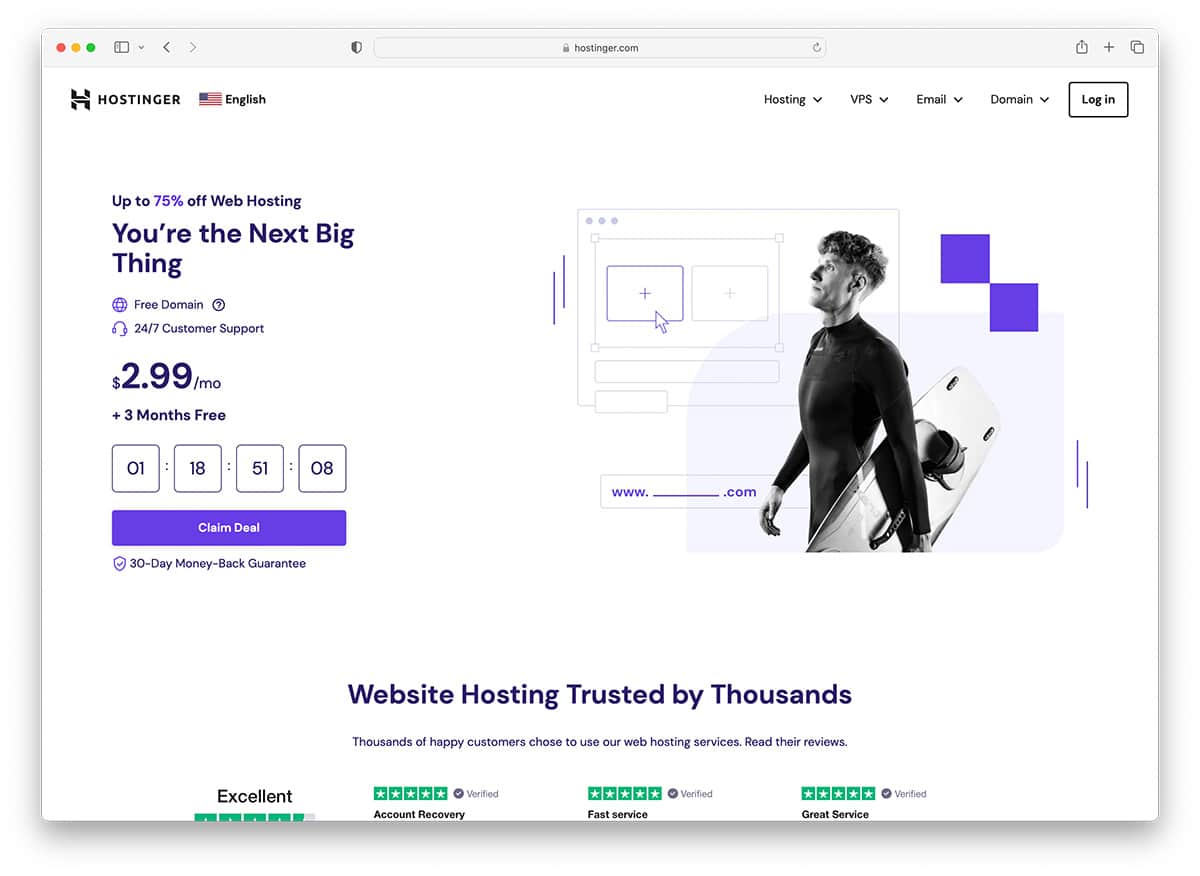
A load balancer diagram depicts a network of servers. Each server has a set weight or power. A client requests an application from the server with the highest power. Three application servers are equivalent in power. Two of these servers can handle a client request for an application, while the third server is twice as powerful. Clients will request identical amounts of data from each application server. However, the requests will be sent to different servers.
Hashing algorithm
A Loadbalancing diagram illustrates how requests are routed through healthy servers according to their IP addresses. Load Balancing employs the Hashing algorithm. Each client request is uniquely identified by the Hashing algorithm. The request is directed to the server by the hashing result.
Distributed systems use hashing to evenly map requests between all servers in a group. Maintaining consistency in hashing between nodes reduces the amount work required by the cluster for every ring change.
Connection multiplexing
Connection multiplexing can be used to distribute traffic between multiple servers. The load balancer chooses the right service when a client requests it. An ADC must track both the initial connection as well as any follow-on traffic initiated by the client to accomplish this task. This is important because follow on traffic could be experiencing two specific problems, namely connection maintenance and persistence.

In a load balancer diagram, connection multiplexing can be achieved by multiplying the total number of connections with the number of servers. Each server has an IP address and a port that is assigned to it. The load balancer receives a request for particular services and will rewrite the packet to include its destination IP address.
SSL tunnel
SSL passthrough is an effective method of configuring SSL in a load balancer. SSL passthrough places all encryption and decryption work onto the load balancer, which makes certificate management much easier. SSL passthrough ensures that traffic between the load balancer and the backend servers remains secure. However, SSL passthrough can expose customer information to other network instances. It is not recommended for networks with lower security.
SSL passthrough takes more CPU cycles and incurs higher operational costs. This method is unsuitable for high-traffic deployments. This method does not allow for the creation of access rules or sticky sessions. It's therefore not suitable for large-scale deployments.
Network server load balancer
A load balancer is a network device which rewrites packets to ensure they reach their destination. A loadbalancer can handle different traffic types depending on their source IP addresses. The process of load balancing involves multiple servers. The first server acts as a "front-end" and receives incoming traffic and forwards it to the next server. A second server acts in the "back-end" role and replies to clients.
The load balancer may be a physical appliance or a virtual software-based device. If a server is unavailable, the load balancer will redirect requests to other servers. It will also automatically transfer requests if another server has been added.

Kubernetes load balancer
Diagram showing Kubernetes load balancers. This diagram shows how requests are handled and responses are handled by each pod. This approach fails to account for persistent connections. This means that the client-side load balancing must be implemented by the application. Luckily, there are a number of solutions for this issue, including kube-proxy and iptables. These solutions can only be used for common deployment scenarios. They do not address the specific requirements of particular applications.
Kubernetes permits each pod to have its unique IP address. In the above diagram, each Pod transmits requests to services with a fixed IP. The controller will then collect the pending Service requests and assign them unique IP addresses so that they can deliver the incoming packets.
FAQ
Can I use HTML & CCS to build my website?
Yes! Yes!
Now that you know how to create the structure of a website, you'll also need to learn some HTML and CSS coding.
HTML stands as HyperText Markup Language. This is like writing a recipe. It would include ingredients, instructions, as well as directions. HTML allows you to indicate to a computer which portions of text are bold, italicized and underlined. It also lets you know which part of the document is linked. It is the language of documents.
CSS stands for Cascading Style Sheets. It is like a stylesheet that you use to create recipes. Instead of listing each ingredient and instructing, you can write down general guidelines for font sizes, colors and spacing.
HTML tells your browser how to create a web page. CSS tells you how.
If you don't understand either of those terms, don't fret. Follow these tutorials to create beautiful websites.
How do I choose a Domain Name?
A good domain name is vital. People won't know where to go if they don't have a good domain name.
Domain names need to be short and simple to remember, relevant for your brand, and unique. You want it to be something people will type into their browser.
Here are some ways to choose a domain name.
* Use keywords that are related to your niche.
* Do not use (-), hyphens in your numbers and symbols.
* Don't use.net or.org domains.
* Avoid using words that are already taken.
* Try to avoid generic terms like "domain" or "website."
* Check to make sure it's there.
How much does it cost to create an ecommerce site?
This will depend on whether you are using a platform or a freelancer. eCommerce sites typically start at around $1,000.
You can expect to pay between $5000 and $10,000 for a platform once you have decided.
You won't spend more than $5,000 if you are using a template. This includes any customizations you may need to match your brand.
What is a UI developer?
The interface design team for software products is called a user interface (UI). They are responsible for the design of the layout and visual elements in an application. The UI designer may also include graphic designers.
The UI Designer should be able to identify problems and solve them.
A UI designer needs to be passionate about software and technology. From developing ideas to implementing them into code, a UI designer must be able to comprehend all aspects of the field.
They should be able create designs with various tools and techniques. They must be able think creatively and find innovative solutions to problems.
They should be detail oriented and organized. They should be able create prototypes quickly and efficiently.
They should be comfortable working alongside clients large and small. They should be able, and willing, to adapt in different environments and situations.
They should be able speak clearly and effectively with others. They should be able communicate clearly and concisely.
They should be well-rounded and possess strong communication abilities.
They must be motivated and driven.
They should be passionate about what they do.
Do I hire a web developer or make it myself?
If you're looking to save some money, don’t pay for web designing services. However, if you are looking for high-quality results, hiring someone to design your website might not be worth it.
You don't need to hire expensive web designers to create websites.
If you're willing put in the work, you can create a website that looks great using tools like Dreamweaver.
An alternative option to outsourcing your project is to hire an experienced freelance web designer who charges per-hour instead of per job.
Statistics
- It enables you to sell your music directly on your website and keep 100% of the profits. (wix.com)
- Is your web design optimized for mobile? Over 50% of internet users browse websites using a mobile device. (wix.com)
- Did you know videos can boost organic search traffic to your website by 157%? (wix.com)
- When choosing your website color scheme, a general rule is to limit yourself to three shades: one primary color (60% of the mix), one secondary color (30%), and one accent color (10%). (wix.com)
- The average website user will read about 20% of the text on any given page, so it's crucial to entice them with an appropriate vibe. (websitebuilderexpert.com)
External Links
How To
What is website hosting?
Website hosting is the location where people go when they visit websites. There are two types of website hosting:
-
The cheapest option is shared hosting. Your website files will reside on a server belonging to someone else. When customers visit your site, their requests travel over the Internet to that server. The request is then handed to the owner of that server.
-
Dedicated hosting: This is the most costly option. Your website resides entirely on one server. There are no other websites sharing space on the server. Your traffic remains private.
Most businesses choose shared hosting because it's less expensive than dedicated hosting. The company hosting the server will provide the resources necessary to manage your website.
Each option has its pros and cons. These are some of the major differences between them.
Shared Hosting Pros:
-
Lower Cost
-
It's easy to set up
-
Frequent Updates
-
It can Be Found On Many Web Hosting Companies
You can get shared hosting for as low as $10 per monthly. Remember that shared hosting usually comes with bandwidth. Bandwidth describes the amount of data that can be transferred over the Internet. Even if only you upload photos to your blog or website, high-volume data transfers may incur additional charges.
You'll soon realize why your old host cost so much once you get started. Most shared hosts have very poor customer support. Although their techs may help you with setting up your site, it's not a common practice.
Providers that offer 24-hour customer support are worth looking into. They'll take care of any issues that come up while you sleep.
Hosting dedicated:
-
More Expensive
-
Less common
-
You will need to have special skills
You're getting everything you need with dedicated hosting to operate your website. You won't worry about how much bandwidth you are using or how much RAM (random Access Memory) you have.
This means that you'll spend a bit more upfront. Once you get started with your online business, you will find that you don't require much technical support. You will become an expert in managing your servers.
Which is better for my business?
This depends on the kind of website that you want. If you are selling products, shared hosting may be the best option. It's very easy to setup and maintain. It's easy to set up and maintain, as you share a server with other sites. You will likely be updated frequently.
If you want to create a community around a brand, dedicated hosting may be the best choice. Instead of worrying about your traffic, you can build your brand while still being able to concentrate on your business.
Bluehost.com is the best web host for both. Bluehost.com offers unlimited monthly data transfers, 24/7 customer support, domain registrations free of charge, and a 30-day guarantee for your money back.